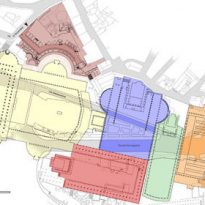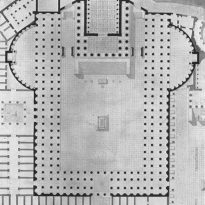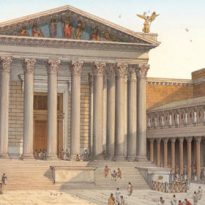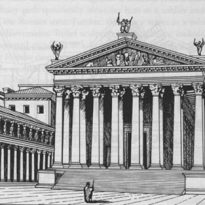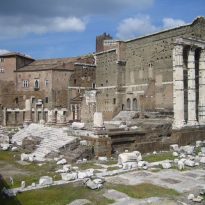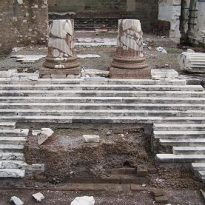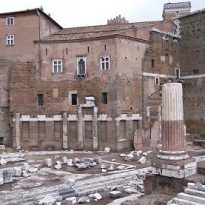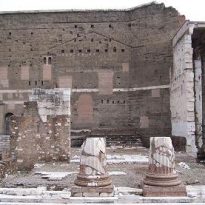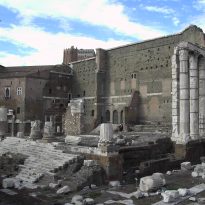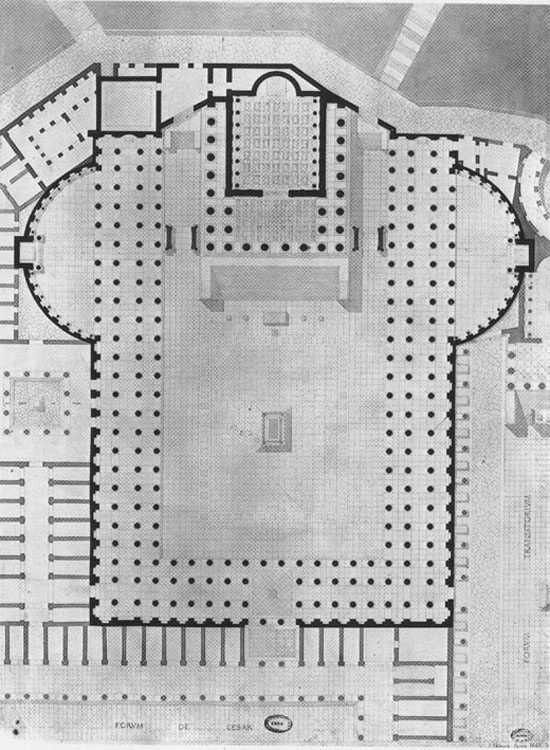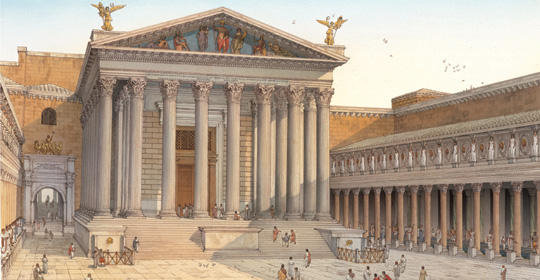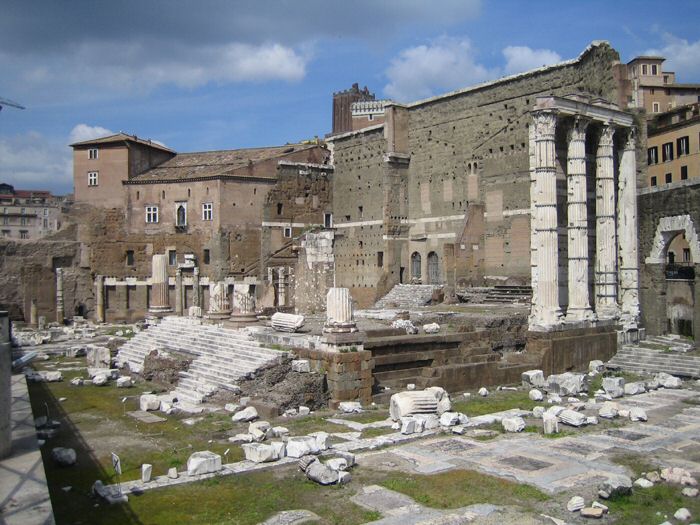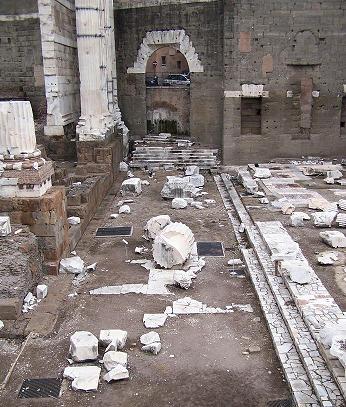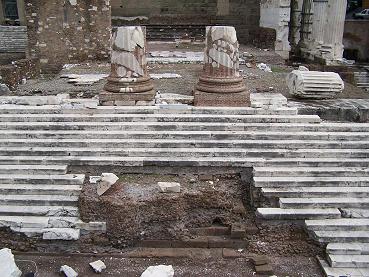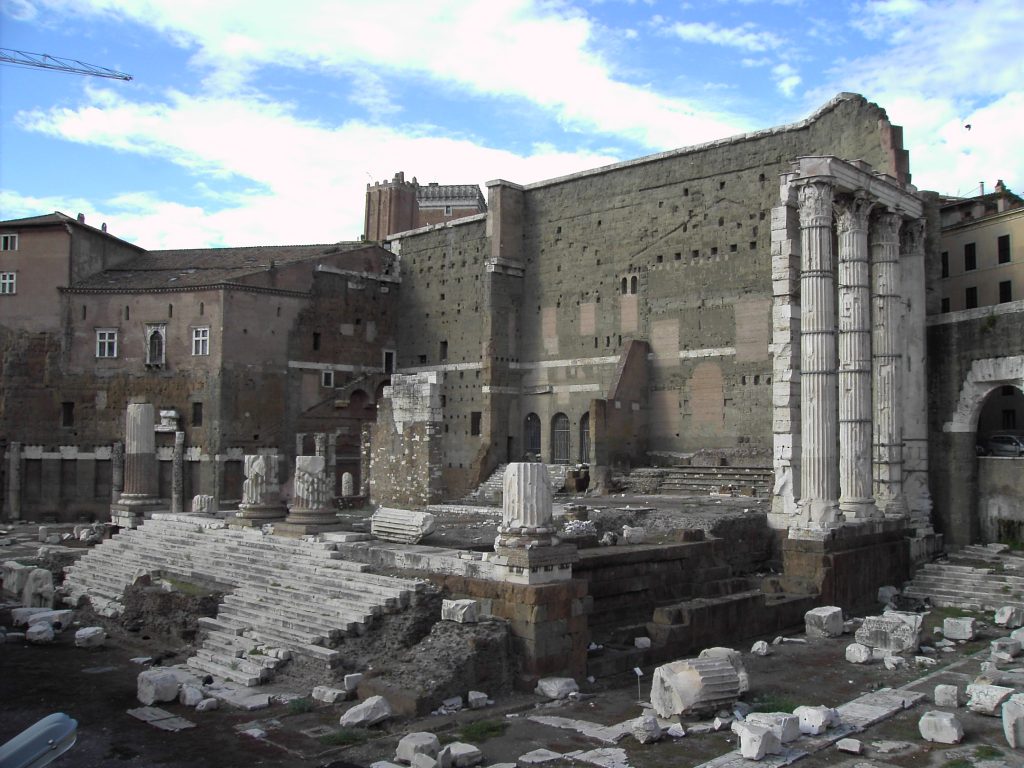Augusto Forum
Introduction
Following the example of Caesar, his son, Augustus, built his square forum as its predecessor and reserved the preferential end of the square for the temple he had promised to Mars Ultor (Mars Vengador) on the eve of the battle of Philippi (42 BC), which was fought against the murderers of his father.
Construction began in 31 A.C., after considerable demolition work. Thirty years later, in 2 BC, the project was completed and inaugurated.
Meanwhile, two developments were consecrated: marble, not only Greek, but Italian (Carrara) as a building material and capping columns with other capitals of the Corinthian order, the Corinthian capitals of the so-called normal, not excluding other forms.
Situation
The Forum of Augustus is located between the Forum of Caesar in the west, the east district of Subura, the Forum of Trajan in the north and south Transitional Forum.
The place is stretched between the Roman Forum and the beginning of the Subura neighborhood; a high wall was constructed, which formed the background of the new forum, to separate it from the wooden shacks and frequent fires or Subura; its irregular line shows the difficulties the builders had to overcome.
Meaning
Augustus wanted to avenge the death of his adoptive father, Caesar. So when he finally ended his murderers, Casius and Brutus, he decided to dedicate a temple to Mars Ultor (the Vengador) in place of the new Forum, to be superior to the two existing ones, the Forum of Caesar and the Roman Forum, and be particularly devoted to the administration of justice.
Spaces
The entrance, located in the southwestern part, adjacent to the eastern side of the Forum of Caesar, is now under method of the Imperial Forums, as well as the anterior part of the plaza and the porches. There were also two other entrances to the Forum, two staircases on both sides of the temple of Mars led from the Forum to the Subura neighborhood. At the top of the stairs one can still see an arch, known as Pantanos Arch. Moreover, these entries are two arcs, and dedicated to Drusus Germanicus.
The bottom of the porches were open around the temple with two great symmetrical semicircular platforms, and in the center of the square was a bronze chariot with the figure of the emperor.
The porches of the longest sides present/display columns corintias of marble veining, and were decorated on top with caryatid shields and crowned gods. Behind the colonnade at the back wall of the arcades and on the walls of the two Exedra, there were a number of niches for embedded statues framed by columns supporting an architrave of cipolino marble. The statues at the base bore writing, the name and dignity of the character represented, while a plate underneath the niche containing the elogium, with descriptions of the different feats completed.
At the center of the north Exedra was a statue of Aeneas, bigger than any other, flanked by those of Anchises and Ascanio, members of the family of Julius and the kings of Alba Longa. Similarly, in the center of the southern Exedra was the statue of Romulus, surrounded by the eminent personalities in the history of republican Rome, which continued along the walls of the two porches.
At the bottom of the portico on the north side there was a large room richly decorated with marble, which contained two tables to appeal to a colossal statue of Augustus (14 meters high), placed here by the Emperor Claudius.
Finally, against the back wall of the Forum stood the Temple of Mars Ultor.
Temple of Mars Ultor
It was formed by a balcony located on a high marble plinth, to which it was accessed via a staircase of 17 steps that had an altar in the center and two chapels on the sides.
The temple had eight Corinthian columns of more than 17 meters in height at the front and eight on the sides, of which some are still preserved, while the bottom side was devoid of them (períptero sin postico). Inside, the temple had seven columns arranged in a double row along the wall and the bottom of the enclosure opened onto an apse with statues of Venus, Mars and Julius Caesar.
The Temple of Mars Ultor also received worship for deities associated with the owner, such as Venus Genetrix Divus Iulius.
The church played an important role in public life: it kept the sword of Caesar, the Senate debated the issues of peace and war, the princes of the imperial family were invested with the toga virile, treaties were subject to ratification and its general premise recited before the start of their campaigns, and their actions with the triumphant return of the same.



